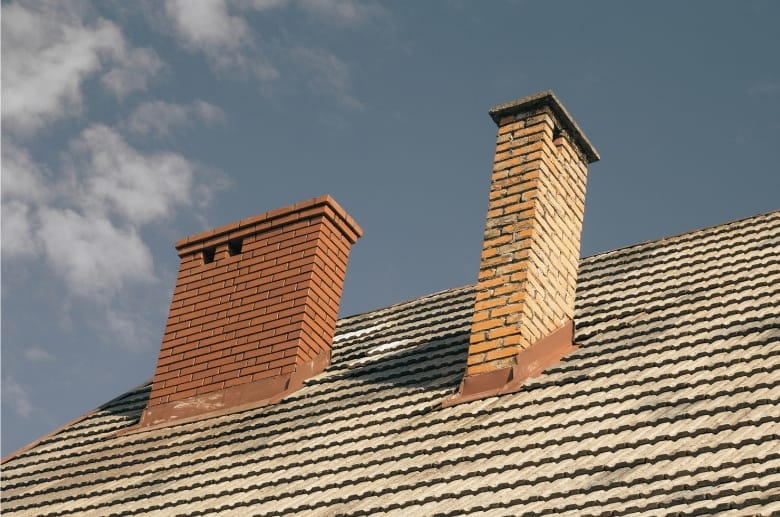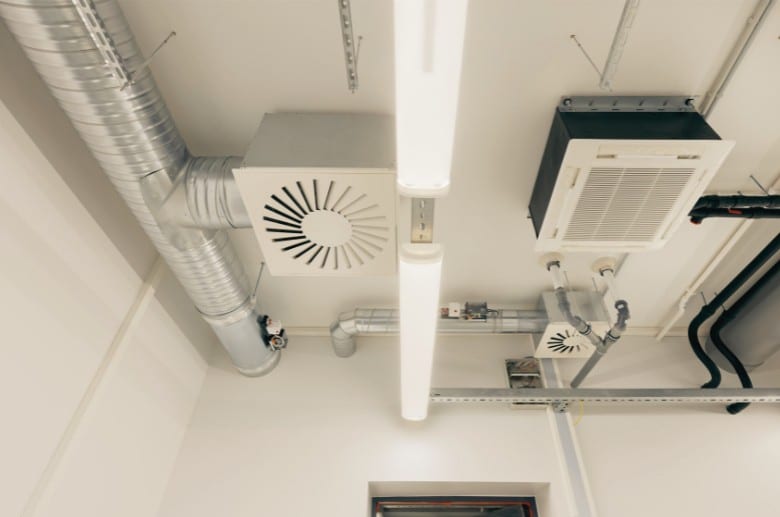Why do I have two chimneys? It’s a question that may have crossed your mind as you gaze upon the twin stacks protruding from your roof. Chimneys, those familiar structures that channel smoke and gasses from fireplaces and furnaces, often come in pairs for surprising reasons.
While it may seem unnecessary, there are several practical reasons why a house might have more than one chimney. Let’s look at the reasons why and what two chimneys can tell us about the history and design of the house.
Why Do I Have Two Chimneys?
Having two chimneys is common in many older houses, but why?
Historical Reasons for Two Chimneys
In the past, homes were built differently than they are today. Building materials were less advanced, and homes relied heavily on fireplaces and stoves for heating and cooking.
Therefore, multiple types of chimneys were necessary to accommodate several fireplaces and stoves. In fact, it was common for large homes to have many fireplaces, each with its own chimney.
As technology and building materials improved, homes began to rely less on fireplaces and more on centralized heating systems. As a result, modern homes typically have only one chimney or none at all.
When you see a home with two chimneys, it typically means that the home was either built before central heating became popular or has been remodeled to include a traditional fireplace alongside the modern heating system. Either way, having two chimneys is important in preserving the house’s historic character.
Architectural Reasons for Two Chimneys

In some cases, the reason for having two chimneys is simply for architectural symmetry. For example, larger homes with multiple wings or buildings may have shared chimneys, one on either end, to maintain a balanced appearance. This was especially true in the past when the appearance of a home was highly valued.
Moreover, two chimneys can add to a home’s overall aesthetic. For example, some contemporary homes feature two tall thin chimneys on either side of the roof. Not only do these chimneys serve a practical purpose, but they also enhance the visual appeal of the home.
——
Do You Need to Hire Chimney & Fireplace Expert?
Get free quotes from qualified experts near you. No commitment required!
——
Multiple Heat Sources
Some homes have multiple heat sources other than fireplaces or wood stoves. Let’s say a home has a propane or oil furnace requiring a chimney. This means that the home would need two chimneys to accommodate both heat sources.
Alternatively, the home may have multiple fireplaces in different areas, such as the living room, basement, and second story, each requiring a chimney.
Fireplace Design and Efficiency

Different types of fireplaces may require separate chimneys. A traditional open hearth fireplace and a more efficient wood stove or insert may require different venting systems. Additionally, the design of the fireplace itself can impact its efficiency.
For instance, a Rumford fireplace is designed to be more efficient than a traditional open hearth fireplace but requires a larger chimney.
Sometimes, a house may have two chimneys – one for heating and the other for aesthetics. For instance, a homeowner may desire a grand, traditional fireplace in the living room just for its looks but also need a more efficient wood stove in the basement for warmth. When such a situation arises, two chimneys become a necessity.
HVAC System Design

Finally, some homes may have two chimneys to accommodate different HVAC systems. This is common in older homes that rely on radiators for heating. In this case, the home may have a chimney for the boiler and a separate chimney for the water heater. This ensures that each system can vent properly.
Chimney Maintenance and Repair
It’s not uncommon for homeowners to have multiple chimneys, especially if they have more than one fireplace or heating appliance. Here are some reasons why homeowners choose to have separate chimneys for separate fireplaces:

- Ease of maintenance: Having separate chimneys for separate fireplaces can make it easier to maintain and repair each one individually. This can be particularly important if one chimney has issues that must be addressed without affecting the other.
- Building code requirements: In some areas, building codes may require separate chimneys for separate fireplaces. This is often the case in densely populated urban areas with strict fire safety regulations. Having separate chimneys can help prevent fires from spreading from one chimney to another, which can be particularly important in multi-unit buildings.
- Safety: Maintaining separate chimneys can also enhance safety by reducing the risk of fires, smoke inhalation, and carbon monoxide poisoning when chimneys are not adequately maintained.
- Better efficiency: Using separate chimneys for separate fireplaces can also improve the heating system’s efficiency. Each chimney can be designed to meet the specific needs of the fireplace or heating appliance it serves.
- Longevity: By operating two chimneys, you can alternate between using them, which can help reduce the amount of wear and tear on each chimney. This can help prolong the life of each chimney and prevent the need for expensive repairs or replacements.
- Cost-effectiveness: While maintaining multiple chimneys may seem like an added expense, it can be more cost-effective in the long run. Having two chimneys means that if one chimney develops a problem, you can still use the other one while the problem is being fixed. Moreover, having two chimneys allows for more efficient heating.
Conclusion
Having two chimneys in some homes is a practical choice for several reasons, including maintenance convenience, efficiency, and cost-effectiveness. Each chimney can be tailored to suit the specific requirements of the fireplace or heating appliance it serves.
It’s important to understand chimney design and maintenance to ensure the safety and comfort of your home. Regular maintenance and repair can prevent issues that can significantly reduce the lifespan of chimneys and pose a risk to the home’s occupants.






